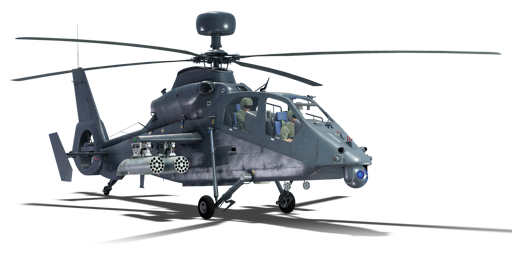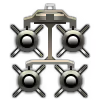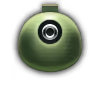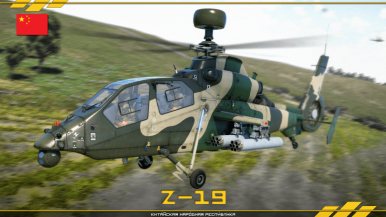



The Z-19, commonly referred to by AVIC as the 黑旋风 (Black Whirlwind; the nickname of 李逵 Li Kui in 水浒传 Water Margin, one of the Four Classic Chinese Novels), is an observation/attack helicopter of the PLAGF Aviation Corps, used alongside the Z-10. The basis for the Z-19 came from the modification of the Z-9WA, which was based on the licensed SA365 Dauphin, to fulfil the need for an observation helicopter for army units, as well as a platform for future ATGMs. Although there are some traces of the Dauphin bloodline, notably the Fenestron tail, the Z-19 features new MMW radar for ground target acquisition and a revised tandem cockpit alongside the latest electronics available in China. The revised airframe was also designed to carry a variety of payloads against different types of targets, including enemy helicopters. The prototype made its maiden flight in 2011, and was adopted for service in 2012. A total of over 150 of these aircraft have been delivered to the Chinese army, and they are still in active production, as well as being planned for export.
Introduced in Update "Drone Age" alongside the initial Chinese helicopter tree, the Harbin Z-19 is a derivative of the Z-9WA that evolves the Dauphin design into a proper attack helicopter. Not only has its air-to-ground payloads evolved from the SCALOS HJ-8 family to AKD-9 laser-guided missiles comparable to the American Hellfire, but the number of hardpoints has also doubled (from 4 to 8). Avionics have been improved with a mast-mounted radar and an auto-tracker system. The "Black Whirlwind" continues the tradition of being a menace to air targets as well as tanks, but it also has the typical flaws of light protection and no internal gun.
| Name | Weight | Slot | ||||
|---|---|---|---|---|---|---|
| 18 × | 115.5 kg |  |  |  |  | |
| 7 × | 112.8 kg |  |  |  |  | |
| 4 × | 124 kg |  |  | |||
| 4 × | 158.3 kg |  |  | |||
| 90.8 kg |  |  | ||||












Flight performance |
|---|
Survivability |
|---|
Weaponry | ||
|---|---|---|
